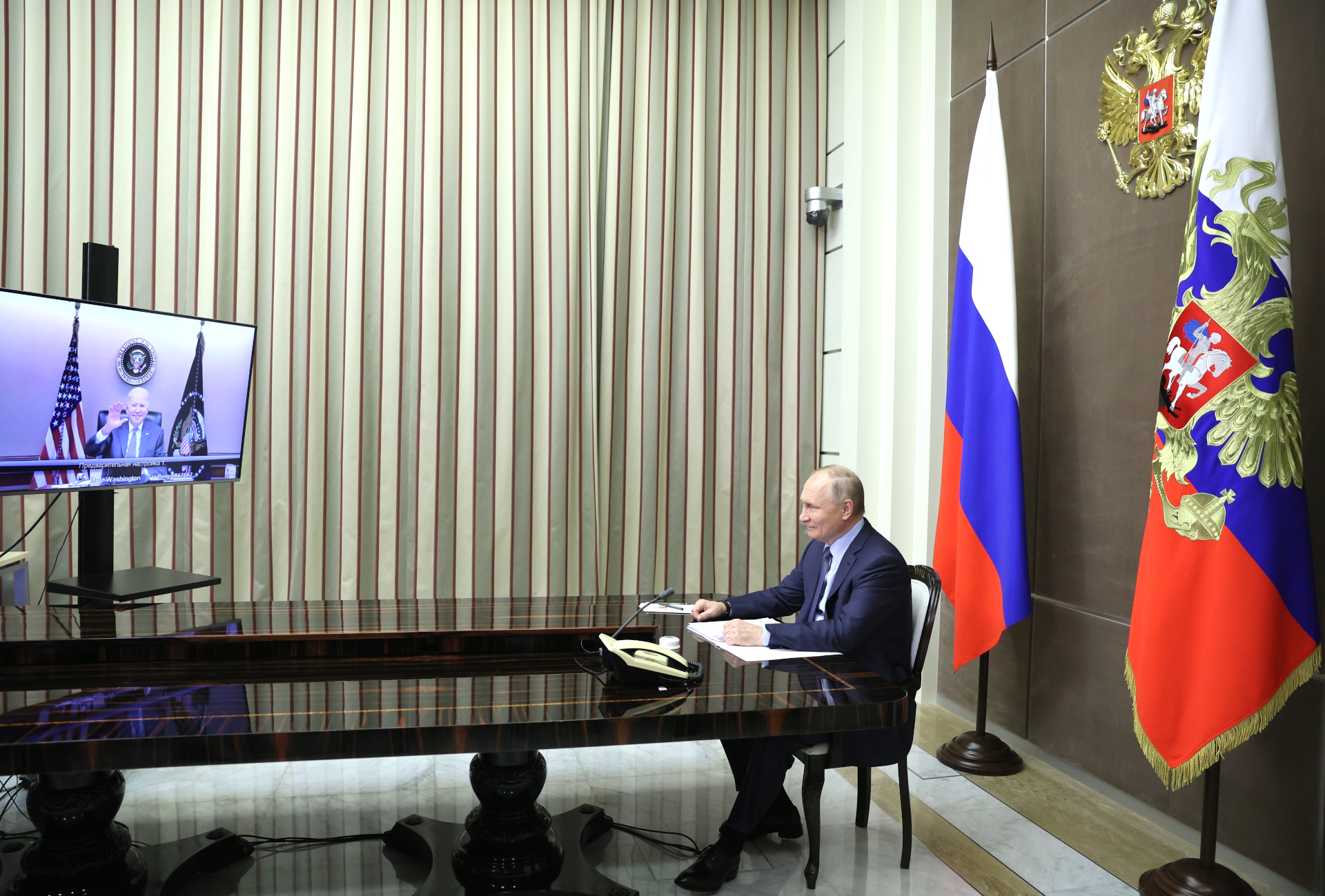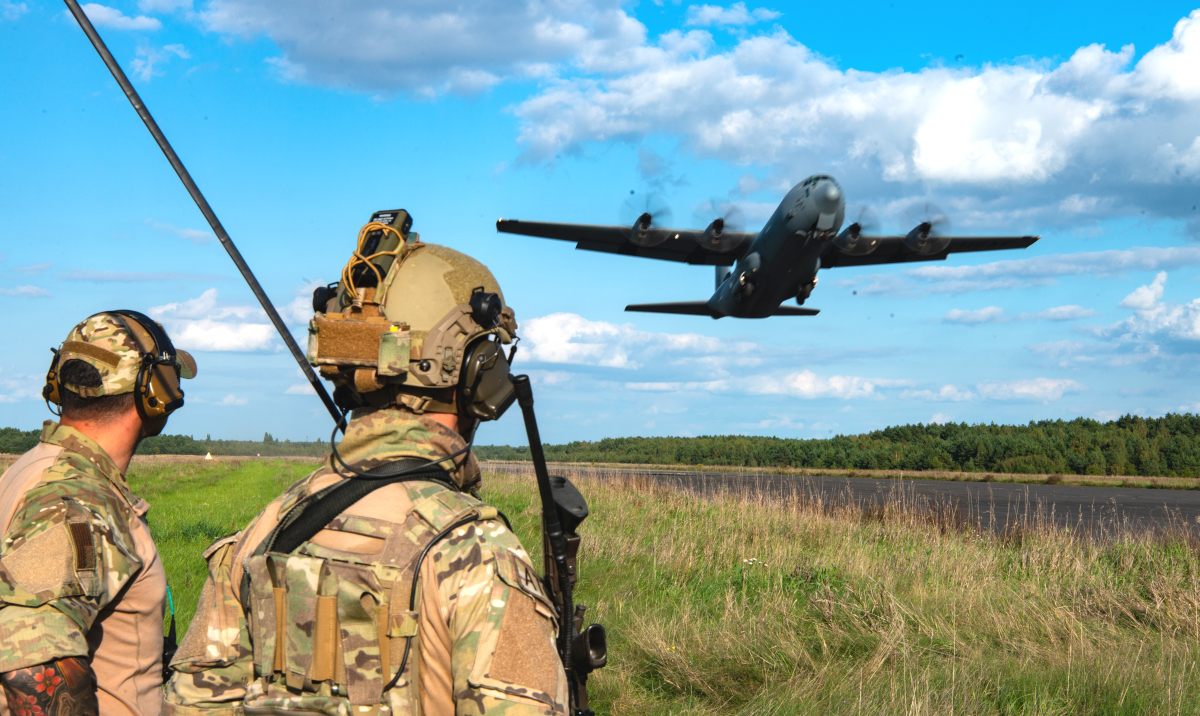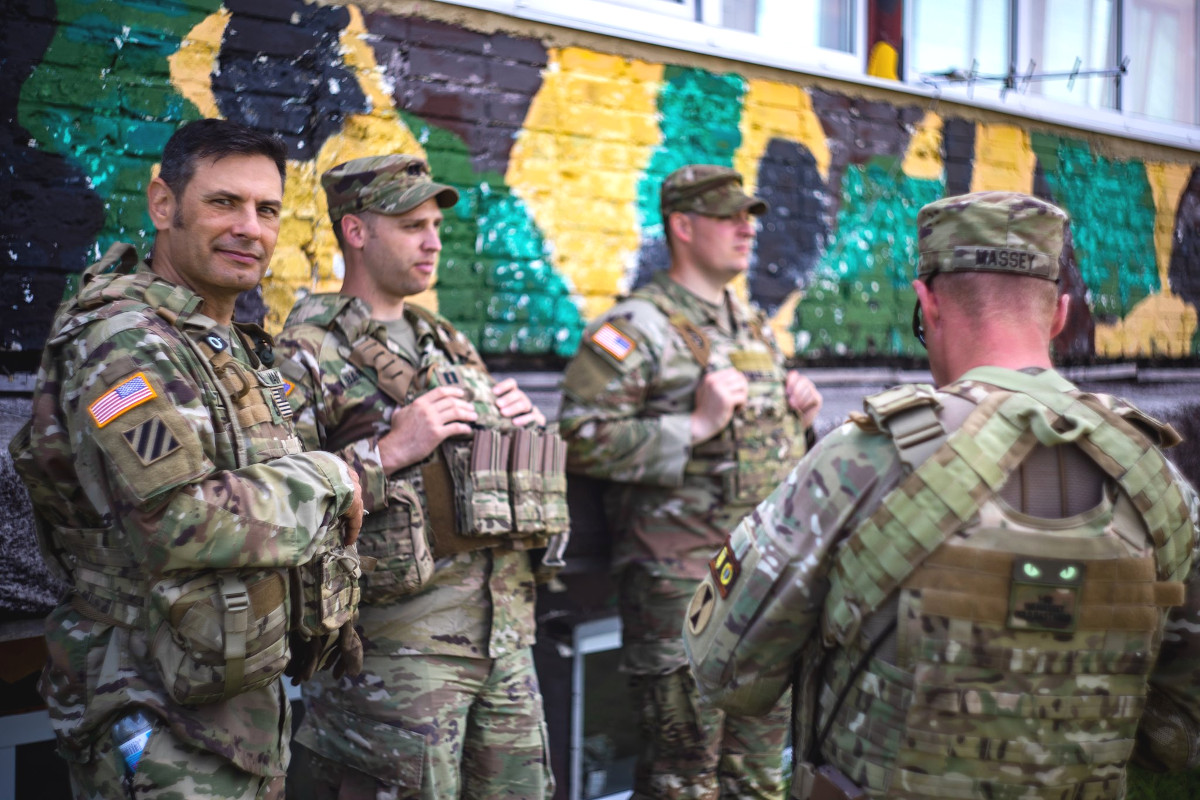The Pentagon has been conducting more immediate planning for potential evacuations of U.S. diplomatic personnel and other American nationals from Ukraine in the event of a new, large-scale Russian military intervention into that country, according to a report from CNN. At the same time, U.S. officials are warning that there may be limited options to deter the Kremlin from conducting such an operation. This news came ahead of a virtual summit between U.S. President Joe Biden’s with Russian President Vladimir Putin today over this brewing crisis, with intelligence assessments already warning for weeks that Russia could launch a new invasion of its neighbor as soon as January.
Victoria Nuland, the U.S. Under Secretary of State for Political Affairs, included details about U.S. military contingency planning in briefings to members of Congress on Dec. 6, 2021, according to CNN. The State Department would need to formally request support from the Department of Defense to carry out a so-called non-combatant evacuation operation, or NEO, before any such mission could be carried out.

“Right now, the Pentagon is planning for a number of different scenarios in the event that an evacuation is necessary, ranging from a smaller evacuation of just nonessential U.S. government employees to a larger one involving a broader swath of American citizens,” CNN reported. “The State Department would be responsible for ultimately determining whether an evacuation operation is necessary. Right now some planning is underway by the State Department’s diplomatic security for either an authorized or ordered departure of diplomats from the country should the situation warrant it.”
The CNN story did not include any details about exactly what a Ukraine NEO might look like if the U.S. military were to be called in to conduct it. Planning for such an operation could include the forward deployment of various American special operations and conventional forces to the territory of NATO allies bordering Ukraine to the west. The U.S. military already has a significant forward presence in Poland, for instance, that includes access to established airbases in that country that could be used to stage aircraft, personnel, and equipment. Last month, online flight tracking software picked up an unusual flurry of U.S. Air Force transport aircraft flying to the country of Djibouti in East Africa in what looked to be pre-positioning of forces for a possible NEO in neighboring Ethiopia.

“The U.S. does not want to be caught ‘flat-footed’ in the event of an unexpected invasion, said one source familiar with the matter,” according to CNN, reflecting the continuing criticism that the Biden administration has faced over the chaotic evacuation of Americans and others from Afghanistan after the country fell to the Taliban in August. “Still, officials emphasized that any potential evacuation in Ukraine likely would not resemble the massive U.S. effort to evacuate all American citizens from Afghanistan earlier this year.”
As already noted, the U.S. military has significant access to Ukraine’s western neighbors, something it did not have in the case of the Afghanistan evacuations. This would have immediate and significant impacts on the comparative size and scope of any future Ukrainian NEO.
Publicly, the State Department continues to stress that there is no need for any such evacuations from Ukraine now. Publicly, U.S. officials, as well as their Ukrainian counterparts, say that there are no indications that the Kremlin has actually decided to launch a new, large-scale military operation into Ukraine, either.
“We don’t know that Putin has made up his mind to use force,” Bill Burns, the Director of the Central Intelligence Agency (CIA), said at the Wall Street Journal‘s CEO Council Summit yesterday, echoing sentiments that have previously emanated from the State Department and the Department of Defense. “What we do know is that he’s putting the Russian military, the Russian security forces in a place where they could act in a pretty sweeping way.”

There have been U.S. travel advisories in place for Ukraine due to the potential for open conflict since 2014, when Russia seized the Crimean Peninsula and then began actively supporting ostensibly local “separatists” fighting the government in Kyiv. There is also a separate “Do Not Travel” advisory at present over a surge in COVID-19 cases in Ukraine.
Of course, the U.S. military has standing plans for conducting various types of NEOs in Ukraine already, and it is only prudent to ensure they are up to date given the state of the current crisis. U.S. and Ukrainian intelligence assessments show that the Kremlin has deployed tens of thousands of troops near Russia’s borders with Ukraine and could have up to 175,000 personnel, at least, in place by early next year. This, coupled with the establishment of supply lines and the deployment of medical units, essential for sustaining major combat operations, make it clear that the threat of a new Russian invasion is real, whether or not it ultimately comes to pass.
CNN’s suggests that the more active planning for potential evacuations is based on growing fears that a new Russian intervention in Ukraine may be increasingly inevitable, despite public statements downplaying those concerns. As part of her briefings to lawmakers, “Nuland … acknowledged that the US’ options to deter an invasion are fairly limited, a person familiar with the briefing said,” according to that outlet.
Nuland had been primarily briefing legislators about Biden’s meeting today with Putin. Reports yesterday said that Biden was likely to threaten Putin with significant new sanctions, including against Russia’s banking sector, as well as the deployment of additional forces in NATO countries bordering Ukraine, among other actions, in the event of a new Russian invasion. The U.S. government would also appeal to its allies and partners to do the same, including asking Germany to at least review, if not cancel a major gas pipeline deal with Russia called Nord Stream 2.
In addition, Biden was expected to tell Putin that the United States would step up support for Ukraine’s military, including increased deliveries of weapons and other equipment, if the crisis continues. Ukraine itself has been working to bolster its capabilities in the face of the increased threats from Russia, including ordering additional Turkish-made Bayraktar TB2 armed drones.
So far, there does not appear to be any serious discussion about U.S. or other foreign troop deployments to Ukraine proper. However, Foreign Policy
reported yesterday that officials in Ukraine had asked for U.S. National Guard personnel already in the country as part of an established American security assistance program to be allowed to travel closer to potential flashpoints. The obvious idea here would be that that they could present a deterrent for Kremlin, which have different views about the potential risks from killing American service members compared to Ukrainian troops.

How the crisis will now evolve following Biden and Putin’s meeting today remains to be seen, but the U.S. government is clearly prudently preparing for a worst-case scenario.
Updated 8:50 PM EST:
The U.S. and Russian governments have now both issued formal readouts of today’s Biden-Putin meeting.
“President Biden voiced the deep concerns of the United States and our European Allies about Russia’s escalation of forces surrounding Ukraine and made clear that the U.S. and our Allies would respond with strong economic and other measures in the event of military escalation,” according to the White House. “President Biden reiterated his support for Ukraine’s sovereignty and territorial integrity and called for de-escalation and a return to diplomacy.”
The White House’s readout also said that Biden and Putin talked about unrelated issues, including ransomware attacks linked to Russia and negotiations with Iran over that country’s controversial nuclear program.
“The President of Russia, using specific examples, illustrated the destructive line of Kiev, aimed at the complete dismantling of the Minks agreements and agreements reached in the ‘Normandy format’, expressed serious concern about Kiev’s provocative actions against Donbass,” according to the Kremlin’s readout, referring to various multi-national agreements in place that are supposed to provide a framework for negotiations to end the conflict in eastern Ukraine’s Donbass region. “Putin stressed that the responsibility [to de-escalate] should not be shifted onto the shoulders of Russia, since it is NATO that is making dangerous attempts to conquer Ukrainian territory and building up its military potential at our borders.”
Russian officials for weeks now have asserted that their troop movements in the region are simply in response to provocations from Ukraine, as well as NATO. Just last week, Putin laid out new “red lines” regarding the crisis that focused heavily on NATO expansion near its borders, especially the potential future deployment of longer-range ground-based missiles, such as the hypersonic and other types that the U.S. Army is currently developing.
The U.S. government and NATO, of which Ukraine is not a member and is not currently on any sort of formal path to join, have pushed back against the assertions and red lines. The Kremlin has a history of these kinds of deflections when faced with criticism over malign or otherwise concerning behavior on the international stage. At the same time, Russia has made clear over the years that it sees NATO expansion as a threat to its national interests and that it views Ukraine as being firmly within its sphere of influence.
U.S. National Security Advisor Jake Sullivan has now held a press conference regarding the meeting, as well. He outlined many of the proposed courses of action that the U.S. government could take in the event of a new Russian intervention into Ukraine that have already been reported, including pressure to halt the Nord Stream 2 project.
“Things we did not do in 2014 we are prepared to do now,” Sullivan said when asked about what would be different now compared to the U.S. government’s response to the Kremlin’s invasion of Ukraine in 2014. “If Putin wants to see gas flow through that [Nord Stream 2] pipeline he may not want to invade Ukraine.”
Sullivan also said that Biden had not offered any sort of concessions or other commitments to Putin regarding Ukraine potentially joining NATO in the future.
The U.S. Embassy in Kyiv has released its own statement regarding potential evacuation planning, stating that “Contrary to news reports, U.S. gov’t is not currently considering evacuations of government personnel or American citizens from Ukraine. We conduct normal contingency planning, as we always do, in the event the security situation severely deteriorates.”
CNN’s report, however, had not been the U.S. government was considering whether or not to actually conduct such an evacuation operation, but that planning had been stepped up.
Contact the author: joe@thedrive.com

